Books
Books
published in 2023

Boys Alive
A daring novel, once widely censored, about the scrappy, harrowing, and inventive lives of Rome's unhoused youth by one of Italy's greatest film directors.
Boys Alive, published in 1955, was Pier Paolo Pasolini's first work of fiction and it remains his best known. Written in the aftermath of Pasolini's move from the provinces to Rome, the novel captures the. hunger and anger, waywardness and squalor of the big city. The life of the novel is the life of the city streets; from the streets, too, come its raw, mongrel, assaultive language. Here unblinkered realism and passionate lyricism meet in a vision of a vast urban inferno, blazing with darkness and light.
There is no one story to the book, only stories, splitting off, breaking away, going nowhere, flaming out, stories in which scenes of comic debacle, bitter conflict, wild joy, and crushing disappointment quickly follow. Pasolini's young characters have nothing to trade on except youth, and the struggle to live is unending. They loot, hustle, scavenge, steal. Somehow money will turn up; as soon as it does it will get spent. The main thing, in any case, is to have fun, and so the boys boast and vie, the desperate uncertainty of their days and nights offset by the fabulous inventiveness of their words. A warehouse heist, a night of gambling, the hunt for sex: The world of Boys Alive is a world in convulsion where at any instant disaster may strike.
Tim Parks' new translation of Pasolini's early masterpiece brings out the salt and brilliance of a still-scandalous work of art.

Theorem
This tale about seduction, obsession, family, and the confines of capitalism is one of director Pier Paolo Pasolini's most fascinating creations, based on his transcendent film of the same name.
Theorem is the most enigmatic of Pier Paolo Pasolini's four novels. The book started as a poem and took shape both as a work of fiction and a film, also called Theorem, released the same year. In short prose chapters interspersed with stark passages of poetry, Pasolini tells a story of transfiguration and trauma.
To the suburban mansion of a prosperous Milanese businessman comes a mysterious and beautiful young man who invites himself to stay. From the beginning he exercises a strange fascination on the inhabitants of the house, and soon everyone, from the busy father to the frustrated mother, from the yearning daughter to the weak-willed son to the housemaid from the country, has fallen in love with him. Then, as mysteriously as he appeared, the infatuating young man departs. How will these people he has touched so deeply do without him? Is there a passage out of the spiritual desert of modern capitalism into a new awakening, both of the senses and of the soul? Only questions remain at the end of a book that is at once a bedroom comedy, a political novel, and a religious parable.

Silicone God
Shae wants to stop shagging other women's husbands and be a proper queer. Plus, she's bored of only ever getting to use her new strap on a pile of cushions. The answer seems simple enough: come out, go out, and finally get it on with the fit bird at Dyke Night. Or it would be if Evaline, a wayward silicone mistress from the future, wasn't jealous...
A surreal, dirty little book that falls somewhere between Derek McCormack, David Cronenberg, and the tentacle porn you 'accidentally downloaded', Silicone God is for those who like it very, very weird.
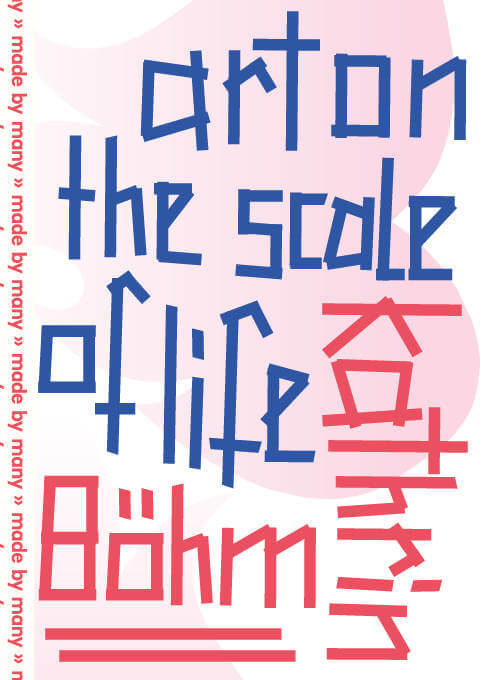
Art on the Scale of Life
A comprehensive overview of artist Kathrin Böhm's multifaceted, deeply collaborative, and durational practice and networks.
This volume critically profiles, contextualizes, and theoretically elaborates the unique practice of the UK-based German artist Kathrin Böhm. Combining visual and textual material, it offers an overview of Böhm's exceptional modus operandi that is rooted in a highly original artistic synthesis of a range of practices. Over the last three decades, Böhm has expanded the terms of socially engaged ways of working to an unprecedented scale and breadth by producing complex organizational, spatial, visual, and economic forms. These often entail the production of complex infrastructures, manifested via projects such as Culture is a Verb (2018–21), The Centre for Plausible Economies (2018–ongoing), Company: Movements, Deals and Drinks (2014–ongoing) and the Eco-Nomadic School (2010–ongoing). The book follows a major mid-career exhibition at The Showroom, London, in 2021.
Offering a significant addition to debates on contemporary art and architecture, social action, and public culture, Kathrin Böhm: Art on the Scale of Life brings together critical reflections by internationally acclaimed contributors. Spanning a wide range of critical positions and disciplines, these include Dave Beech, Céline Condorelli, Elvira Dyangani Ose, Wapke Feenstra, Katherine Gibson, Joon-Lynn Goh, Lily Hall, Yolande Zola Zoli van der Heide, Grace Ndiritu, Gerrie van Noord, Paul O'Neill, Doina Petrescu, Gregory Sholette and THEMM!!, Kuba Szreder, Gavin Wade, Mick Wilson, Stephen Wright, and Franciska Zólyom. In addition, material derived from Böhm's international networks and projects provides an in-depth impression of the deeply ingrained collaborative and durational nature of her way of working.
Photographic, diagrammatic, and typographical imagery runs through the book, demonstrating the rich visual and spatial languages embedded in Böhm's work. This visual register of the book is therefore much more than a series of illustrations and acts as a counterpoint to, and extension of, the ideas elaborated in the texts.
Kathrin Böhm is an international artist based in London. Her work takes place in and outside the art world, as she engages with governance, economics and different trans-local communities. Her main interests are the collective (re-)production of public space, trade as public realm and the everyday as a starting point for culture.
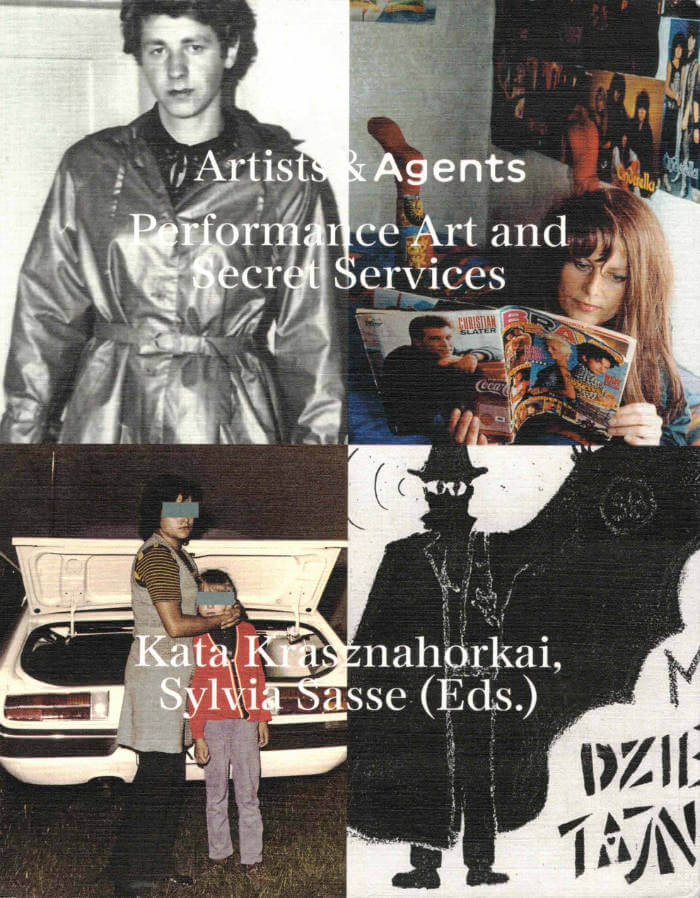
Artists & Agents. Performance Art and Secret Services
Sylvia Sasse, Kata Krasznahorkai
Subversion does not belong to anyone. It can come from artists who outwit the state or from intelligence agencies who infiltrate the art scene on behalf of the state. But what happens when the two sides meet? After the old state security archives in many Eastern European countries were opened, it became possible for this interaction to be studied in detail.
Drawing on scientific essays and artistic contributions, the book shows how the secret police monitored happenings, performance art, and action art and looks at the debates they had about the new art form; it also demonstrates not only how the police documented artistic actions in detail using forensic techniques but also how they manipulated them and sought to thwart them with counter-actions. In addition to this, the book also reveals how artists dealt with the possibility that they were being observed by the secret police and how they now work with the material stored in the archives maintained by the intelligence services.

Ad Học
Teline Trần's Ad Học traverses the improvisational structures that shape social life in order to reflect their valences as both insufficient and abundant. In their first poetry chapbook, Trần locates those junctures with bittersweet pleasure and biting critique and asks how to sustain both at once. This is, Trần shows us, the work of living, against and within the ongoing attrition and amnesia at scales historical and governmental, interpersonal, familial, and social. Ad Học asks the reader to turn inwards, towards a personal politic, to self-revolution, in order to seek horizons dreamier, queerer, and hopefully insurgent.
Teline Trần is a writer from Orange, California or Gabrieleño/Tongva land. They write about home and interstitial faith via several mediums such as fiction, poetry, film, and ultimately, the browser. Teline works as the Membership and Community Engagement Coordinator at Wendy’s Subway, where they were a Fellow in 2020. They also work as the Development Coordinator at Mekong NYC, a Southeast Asian grassroots organization in the Bronx. They hold a degree in Comparative Literature from Reed College.
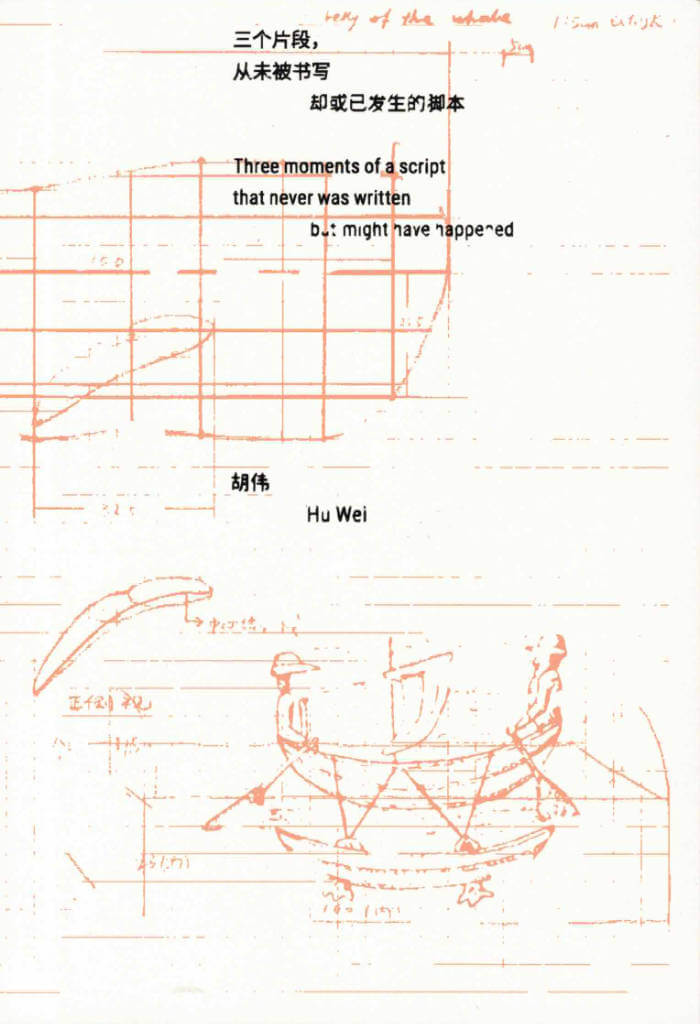
Three moments of a script that never was written but might have happened
This publication departs from three video works by the artist Hu Wei, exploring the possibilities of devising new scripts within the manifold connections between materials for creative works, images, and texts.
The first part of the publication transcribes and recompiles the narrations in his videos into three sets of juxtaposed scripts. Each of these textual fragments showcases an “anatomical section of an era” from disparate geopolitical contexts: a family letter from Sabah, a set of Rashomonian testimony, and an anecdote about the anonymous.
The second part is a notebook-like atlas that unfolds following the clues of three keywords: “Fabrication,” “Anonymity,” and “Boundary.” Within this section, different types of images and texts, including factual materials, embodied research and survey records, as well as fabricated documents, interlace with each other. They serve as an interrogation, extension, reconstruction, and reassemblage of three muted histories or events.

Ana Mendieta - Search for Origin
G. Gourbe, C. Guardiola Bravo and 2 more
Devoted to Cuban-born American artist Ana Mendieta (1948–1985), this monograph appears with an exhibition at Museo de Arte Contemporáneo de Castilla y León, which brings together around 100 works from over fifteen years of production (1968–1985). The exhibition explores how the artist never ceased to reinvent herself through political and vibrant contemporary work, developing an original, ephemeral sculptural language, at times performative in act and informed by her research into primitive myths and rock art. It reveals her relationship to the visible and invisible, her way of rendering the unspeakable intelligible through traces of the body and its relation to nature.

Vital Signs: Writings on Gesture
Vital Signs brings together writings by artist Melissa Gordon, which she has performed live over the past decade in various contexts.
Focusing on the role and behaviour of gesture in her painting practice and that of others, Gordon’s texts move between topics of dropping out, (female) genius, con jobs, how one ‘speaks’ in painting, and notions of ‘suckcess’. Gordons’ writing emerges from a history of feminist organising and editing. Vital Signs shows the development from editor to writer to stand-up performer, and the shuffling and re-combination of the texts with each performative iteration.
The selected pieces – most published here forthe first time – are accompanied by full-page details of Gordon’s body of paintings titled Female Readymades, where inventories of objects, texts, letters, and gestures hang on fences and walls inside larger architectural installations.

Radical Film, Art and Digital Media for Societies in Turmoil
Ursula Böckler, Julia Lazarus and 1 more
Can radical film practices help to understand a disintegrating world? Can they have a healing effect? How can we maintain structures of solidarity in the field of radical media production for societies in turmoil and transition? And what does radical cultural practice look like in times such as ours, when everywhere we turn there seem to lurk even more acute challenges?
Edited by members of the Berlin chapter of the International Radical Film Network, this collection investigates practices of audio-visual production that act on and struggle with the conditions of our time. The contributions were created by film practitioners, artists, activists, as well as academics and critics.
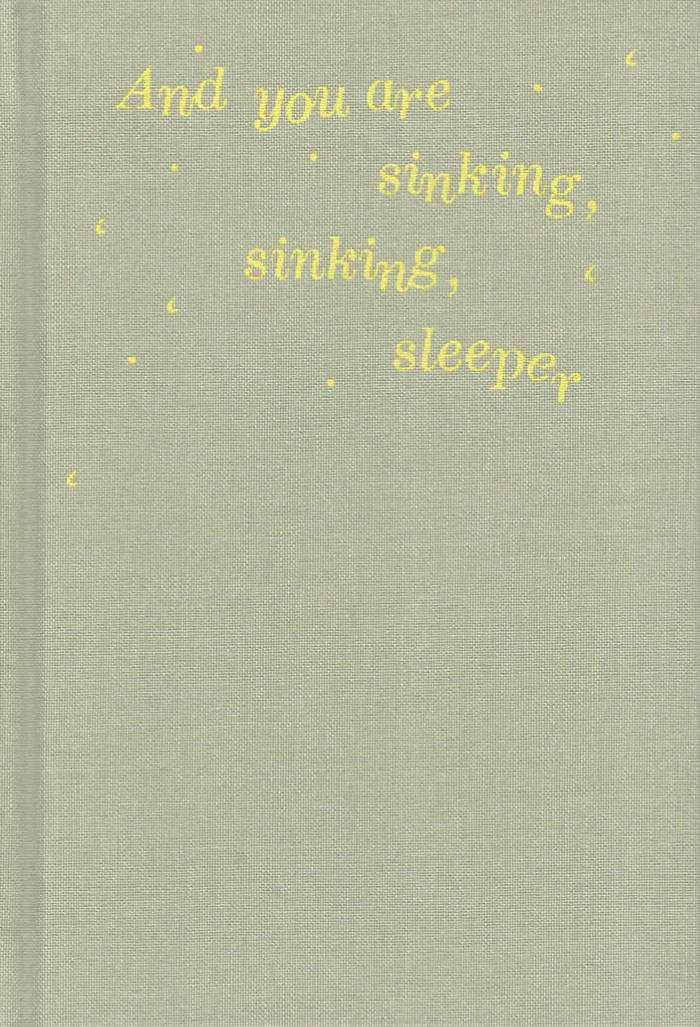
And you are sinking, sinking, sleeper
The topics in this publication circle around watery submerged knowledge; including the drowned land between the Netherlands and Britain (called Doggerland), the Neolithic marine goddess, Nehalennia, and the timber ritual circle referred to as Seahenge.
‘And you are sinking, sinking, sleeper’ focuses on how the ancient peoples of the Netherlands related to the ocean and surrounding waters. The publication consists of resources and notes the author took in her journal during the research process, a series of prints she made while in residence Frans Masereel Centrum and a fictionalized reflection on her own personal relationship to water while living in such a wet wet land.

Russian Colonialism 101
For years, Ukrainian journalist Maksym Eristavi has been mainstreaming the global awareness about the legacy of Russian colonialism. A few days before Russia launched a full-scale invasion of Ukraine, he started a Twitter thread listing all Russian colonial invasions over the last century and highlighting one specific pattern that they all went by. The post has gone viral and is now dubbed the "mother of all Russian colonialism tweets". Together with a group of Ukrainian artists, Eristavi transformed it into an illustrated pocket guide to the 48 most recent invasions of Russian colonialism — to bring everyone’s attention to a pattern of serial behavior by the largest colonial empire.
Publication is prepared with the support of the MOCA NGO and the Ukrainian Emergency Art Fund in collaboration with the Sigrid Rausing Trust. Some illustrations created during the illustrative workshop for the book Russian Colonialism 101 have been donated to the Ukrainian Museum of Contemporary Art (UMCA).
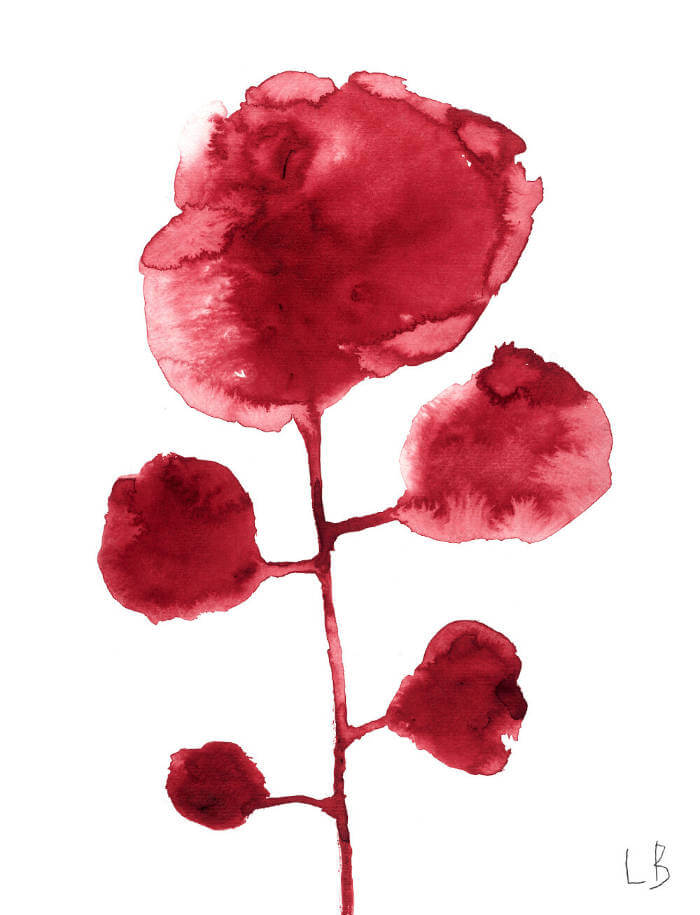
Les Fleurs
Louise Bourgeois' flowers series, painted in gouache on paper.
Born in Paris in 1911 and a New Yorker since 1938, Louise Bourgeois created a unique oeuvre—that owes no allegiance to 20th-century "isms"—in the course of a career than has spanned more than 60 years. Psychologically charged and dealing with the realm of human emotion (love, desire, dependency, sexuality, rejection, jealousy, and abandonment), her art is grounded in her own life and experience: "My goal is to re-experience a past emotion … to relive anxiety … anxiety is a passive state, and the object is to be active and take control." Yet Louise Bourgeois did not create an autonomous universe as an artistic hermit. While her art is nourished by personal experience, it also draws from art and art history—a wellspring of inspiration from which she developed her themes, concepts, and approach to media in both two- and three-dimensional works.

Sore
Sore is a publication that brings together seven texts by authors whose writing practice oscillates between the genres of diary and fiction. Observations of every- day life, memories and cultural references intertwine to form an ensemble of texts that highlight the significance of the soreness we carry within us.
With contributions from : Niklas Büscher, Tindra Eliason, Céline Mathieu, Jonathan Lubasch, E. Eriskat, Emma Bombail and Bryony Dawson + an introduction by Mathilde Heuliez.
Graphic design: Lisa Lagova

A Very Large Array: Selected Poems
Osman's writing reinvents poetry as an instrument for dissecting vision, language and power
This extensive collection of poet Jena Osman's acclaimed work spans more than 30 years, gathering poems from journals and books long out of print. Her poetry traces overlooked visual and linguistic incidents across centuries of American history, transforming "official" language—from Supreme Court opinions to the chatter of Predator drone pilots—into writing that is comic, chilling and relentlessly inventive.
Jena Osman's (born 1963) books include Motion Studies (Ugly Duckling Presse, 2019), Public Figures (Wesleyan University Press, 2012), The Network (Fence Books, 2010, selected for the National Poetry Series in 2009), An Essay in Asterisks (Roof Books, 2004) and The Character (Beacon Press, winner of the 1998 Barnard New Women Poets Prize). She lives in Philadelphia.
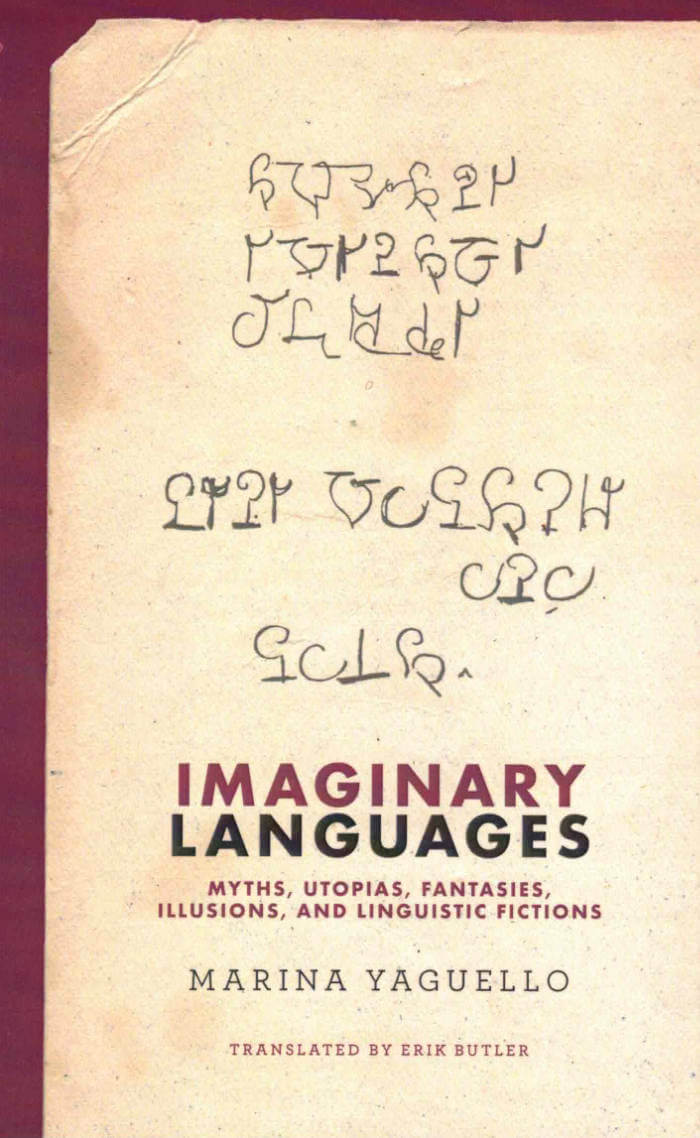
Imaginary Languages: Myths, Utopias, Fantasies, Illusions, and Linguistic Fictions (paperback)
In Imaginary Languages, Marina Yaguello explores the history and practice of inventing languages, from religious speaking in tongues to politically utopian schemes of universality to the discoveries of modern linguistics. She looks for imagined languages that are autonomous systems, complete unto themselves and meant for communal use; imaginary, and therefore unlike both natural languages and historically attested languages; and products of an individual effort to lay hold of language. Inventors of languages, Yaguello writes, are madly in love: they love an object that belongs to them only to the extent that they also share it with a community.
Yaguello investigates the sources of imaginary languages, in myths, dreams, and utopias. She takes readers on a tour of languages invented in literature from the sixteenth to the twentieth century, including that in More's Utopia, Leibniz's "algebra of thought," and Bulwer-Lytton's linguistic fiction. She examines the linguistic fantasies (or madness) of Georgian linguist Nikolai Marr and Swiss medium Hélène Smith; and considers the quest for the true philosophical language. Yaguello finds two abiding (and somewhat contradictory) forces: the diversity of linguistic experience, which stands opposed to unifying endeavors, and, on the other hand, features shared by all languages (natural or not) and their users, which justifies the universalist hypothesis.
Recent years have seen something of a boom in invented languages, whether artificial languages meant to facilitate international communication or imagined languages constructed as part of science fiction worlds. In Imaginary Languages (an updated and expanded version of the earlier Les Fous du langage, published in English as Lunatic Lovers of Language), Yaguello shows that the invention of language is above all a passionate, dizzying labor of love.

Why Do Hoodie Strings Taste So Good?
This text is an attempt to explain the importance of comfort regulation, through sensory stimulation. Whether that be from fidgeting, through masturbation to cuddling and other activities. This thesis is about self-regulation and the objects which visualise that need. From the Freudian psychoanalysis idea of child development through transitional objects introduced by Donald Winnicot to Dakimakura phenomena in otaku culture in a Japanese society that seeks closeness to cute pastelle vibrators which are overflowing the sex toys market. The attempt to answer this question: “Why do hoodie strings taste so good?” seeks to answer the overarching need for constant adjustment to the environment we live in.
I’m intrigued by the need for biting, sucking, and tapping random objects. The fidgeting era is here! We are overwhelmed by all kinds of spinners, popping toys, anti-stress devices, dopamine booster, etc. What is it all about and why have fidget spinners became such a hype in the recent years? Have you ever considered why your hoodie strings taste so good? Have you caught yourself while compulsively sucking them in the metro or at the bus stop? This thesis will endeavour to answer these questions. The answer might be much easier and more pragmatic than we think. In contradiction to my deep analysis in the following sections, one of the reddit users wrote in response to the above question: Why do hoodie strings taste so good?
“Just don’t do it! After sucking them a few times, they become bacteria factories/colonies, so taste (and probably smell) evolves over time. Don’t suck and chew them!! They do, however, work as good, reachable things to practise finger dexterity – to tie knots into and practice rope binding”

On Letters
On Letters is an epistolary essay, structured as thirteen wide-ranging and personal letters to the late conceptual artist On Kawara. Playing with language and its limits, the letters focus first on the artist’s five decade long body of “Date Paintings” and their relationship to typography. Yet from this starting point, the writing swerves to encompass topics such as the creative process, mindfulness, numbering systems, race, narrative structures, and more. On Letters is a unique glimpse into one artist’s inner dialogue and an exploration of how the solitary practice of artmaking can spark other transformations in the world.
"No one is better placed to reflect on On Kawara’s perfect marriage of typography and ontology than Prem Krishnamurthy. An intellectual triumph and a true labour of love." —Tom McCarthy
Prem Krishnamurthy (b. 1977) is a designer, author, and educator. He directs Wkshps, a multidisciplinary design consultancy and organizes Department of Transformation, an emergent, itinerant workshop that practices collaborative tools for social change. He has directed and curated large-scale exhibitions including Oh, Gods of Dust and Rainbows, the 2022 edition of FRONT International: Cleveland Triennial for Contemporary Art; Our Silver City, 2094 at Nottingham Contemporary; and Ministry of Graphic Design in Sharjah, UAE.

Archives on Show – Revoicing, Shapeshifting, Displacing – A Curatorial Glossary
Archives on Show brings the potential of reformulating the social and political relevance of archives by curatorial means into focus.
Based on the specific properties, faculties and methods of curation, the volume highlights those techniques and strategies that deal with archives not only to make their genesis and history apparent but also to open them up for the future. The 22 different ways of dealing with archives testify to the curatorial participation in (re)shaping the archival logic, structures and conditions. As process-oriented, collective and relational modes of producing meaning, these curatorial practices allow for the alteration, reconfiguration and mobilization of the laws, norms and narratives that the archive preserves as preconditions of its power.
The contributions to this volume by artists, curators and theorists demonstrate approaches that curatorially insist on building other relations between human and non-human archival participants. Each is using the book to create a curatorial constellation that generates and forms new connections between different times and spaces, narratives, disciplines and discourses. Configured as a glossary, the positions assembled in this volume exemplify curatorial methods with which to treat the archive as site and tool of collective, ongoing negotiations over its potential societal role and function.
Contributions by Heba Y. Amin, Talal Afifi, Eiman Hussein, Tamer El Said, Stefanie Schulte, Strathaus, Haytham El Wardany, Julie Ault, Kader Attia, Roger M. Buergel, Sophia Prinz, Yael Bartana, Rosi Braidotti, Kirsten Cooke, Ann Harezlak, Alice Creischer, Andreas Siekmann, Octavian Esanu, Megan Hoetger, Carlos Kong, Iman Issa, Kayfa ta, Kapwani Kiwanga, Doreen Mende, Stefan Nowotny, Marion von Osten, pad.ma, Abdias Nascimento, Eran Schaerf, Magdalena Tyżlik-Carver, Françoise Vergès.

Shaping Revolutionary Memory – The Production of Monuments in Socialist Yugoslavia
Sanja Horvatinčić, Beti Žerovc
A comprehensive overview of the vast production of monuments in socialist Yugoslavia (1945–91) dedicated to the antifascist People's Liberation Struggle in the Second World War and the socialist revolution.
Since the breakup of Yugoslavia in the 1990s, these monuments have been subject to various fates, from neglect and physical destruction to global fame generated by the high-modernist visual appeal of a number of them. But the full scope, wide-ranging diversity, and complex context of Yugoslav monument making, including its various contradictions, have remained largely unexplored.
The book offers a thorough and interdisciplinary exploration of this phenomenon and a rich visual material to examine its key characteristics and specificities: What memorial practices and commemorative traditions preceded the development of monument-making in socialism? Who commissioned these monuments and how did Yugoslav cultural and memory politics influence their production? Who were their authors and what defined their formal and typological features? How was Yugoslav monument production related to comparative efforts abroad? What commemorative practices developed around monuments? How is this legacy evaluated and received today, both in the post-Yugoslav successor states and internationally?
Contributions by Marija Đorđević, Sanja Horvatinčić, Heike Karge, Ljiljana Kolešnik, Vladimir Kulić, Bojana Pejić, Sabina Tanović, Beti Žerovc.

Living with Ghosts: A Reader
Living With Ghosts explores the ways the unresolved traumas of Africa’s colonial past, and its unfulfilled project of decolonisation, continue to haunt the present global order. The reader further expands on these complex ideas through philosophical, historical, and literary approaches. Reprinted texts by thinkers such as Achille Mbembe, C.L.R. James, and Sabelo J. Ndlovu-Gatsheni explore the historical experiences of the African postcolony and the problematics of decolonisation. Meditations on artists including John Akomfrah and Abraham Oghobase provide engaging entry points to their multi-layered artistic practices. Also featured are images of artworks in the exhibition and an in-depth conversation between Bouchra Khalili and KJ Abudu.
Texts by Achille Mbembe, Jacques Derrida, C.L.R. James, Sabelo J. Ndlovu-Gatsheni, KJ Abudu, Emmanuel Iduma, Walter D. Mignolo, Avery F. Gordon, Adjoa Armah, Joshua Segun-Lean. Conversation with Bouchra Khalili and KJ Abudu.

The Other Shore
When the dead begin speaking to sixteen-year-old Kim Nguyen, her peaceful childhood is over.
A delicate meditation on the nature of ghosts, belief, and how the future is shaped by the past. When the dead begin speaking to sixteen-year-old Kim Nguyen, her peaceful childhood is over. Suddenly everyone wants to exploit her new talent—her family, the Vietnamese government, and even the spirits themselves.
Hoa Pham is the author of several books and two plays. Her most recent publication is Empathy, also published by Goldsmiths Press under the Gold SF imprint. She is also the founder of Peril Magazine, an Asian-Australian online arts and culture magazine. Hoa lives in Melbourne, Australia.

The Original 1939 Notebook of a Return to the Native Land: Bilingual Edition
The first bilingual edition of this radically original work.
Aimé Césaire's masterpiece, Notebook of a Return to the Native Land, is a work of immense cultural significance and beauty. This long poem was the beginning of Césaire's quest for négritude, and it became an anthem of Blacks around the world. Commentary on Césaire's work has often focused on its Cold War and anticolonialist rhetoric—material that Césaire only added in 1956. The original 1939 version of the poem, given here in French, and in its first English translation, reveals a work that is both spiritual and cultural in structure, tone, and thrust. This Wesleyan edition includes the original illustrations by Wifredo Lam, and an introduction, notes, and chronology by A. James Arnold.

Spatial Folders #1
This publication is the first issue of ‘Spatial Folders’, a thematic periodical that is produced by the faculty of Master Interior Architecture: Research and Design (MIARD) program at Piet Zwart Institute, Willem de Kooning Academy in Rotterdam. It is composed of a selection of graduation theses alongside contributions by guest authors that focus on urgent socio-cultural, socio-political, and ecological issues that affect the (built) environment and its representation regimes.
This first issue focuses on extraction and extractivism that characterises the power structures that make our worlds and their historicities. Across time extraction processes have been making and changing the spaces of the world through displacement of bodies and matter, from within and across the earth. At the same time, these processes establish epistemologies and forms of representation that articulate extraction as natural or inevitable within the frameworks of anthropocentrism, capitalism, colonialism, racism, or hetero-reproductivism.
This collection of texts approaches the question of extraction from a variety of spatial perspectives. The contributions zoom in to specific sites, cases, and areas of interest while providing a critical analysis of various networks of power and influence across time and space. These works do not turn away from the material aspect of extraction but rather closely trace the spatial and material conditions and consequences of extraction in the case of oil, hormones, milk, wood, and water, among others.
With Kris Dittel, Golnar Abbasi, Eva Garibaldi, Shiila Infriccioli, Natasha Marie Llorens, Jane Rendell, Shonali Shetty, Alex Augusto, Suárez Agnes Tatzber, Elien Vermoortel, Dominique Willis, Clementine Edwards, Zoraïma Hupkes
Design by Dongyoung Lee